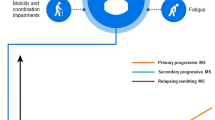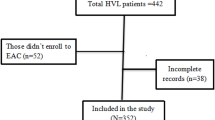Abstract
To improve outcomes among HIV-positive adolescents, the Malawi Ministry of Health is supporting scale-up of “Teen Clubs,” a facility-based antiretroviral treatment (ART) delivery model. Teen Clubs are monthly ART clinics for adolescents (10–19 years old) that provide clinical services and peer psychosocial support. This paper assesses ART adherence among Teen Club attendees in Malawi. We performed a retrospective analysis of medical records and Teen Club attendance data on 589 HIV-positive adolescents at 16 Partners in Hope (PIH)—Extending Quality Improvement for HIV/AIDS in Malawi (EQUIP) supported facilities across Malawi, from January to June of 2017, who attended at least two Teen Club sessions. Multi-level logistic regression models were used to examine the role of gender and age on optimal ART adherence (≥ 95% based on pill count) among HIV-positive adolescents enrolled in Teen Clubs. The median age of adolescents in this sample was 14 years, and 47% were male. Older adolescent males (15–19 years) were 64% more likely to achieve ≥ 95% ART adherence (aOR 1.64, 95% CI 1.16–2.31, p < 0.01) compared to younger (10–14 years) males. The effect of age on adherence was smaller and not significant among females (aOR 1.36, 95% CI 0.96–1.94, p = 0.08). In the full model including males and females, older adolescence was associated with higher odds of optimal adherence (aOR 1.48, 95% CI 1.16–1.90, p < 0.01). These results reinforce the need for age-specialized programming for adolescents, and future research should evaluate this in achieving optimal ART adherence.
Similar content being viewed by others
References
Kim S-H, Gerver SM, Fidler S, Ward H. Adherence to antiretroviral therapy in adolescents living with HIV: systematic review and meta-analysis. AIDS. 2014;28(13):1945–56.
Kiprono Ruttoh S, Tobias M, Kipngeno Ruttoh B. The status of human immuno-deficiency virus (HIV) infection among youth aged 15–24 years in Malawi and Kenya. 2017.
Dellar RC, Dlamini S, Karim QA. Adolescent girls and young women: key populations for HIV epidemic control. J Int AIDS Soc. 2015;18:19408.
Harrison A, Colvin CJ, Kuo C, Swartz A, Lurie M. Sustained high HIV incidence in young women in Southern Africa: social, behavioral, and structural factors and emerging intervention approaches. Curr HIV/AIDS Rep. 2015;12(2):207–15.
Holstad MM, Spangler S, Higgins M, Dalmida SG, Sharma S. Psychosocial characteristics associated with both antiretroviral therapy adherence and risk behaviors in women living with HIV. AIDS Behav. 2016;20(5):1084–96.
Kim MH, Mazenga AC, Yu X, Ahmed S, Paul ME, Kazembe PN, et al. High self-reported non-adherence to antiretroviral therapy amongst adolescents living with HIV in Malawi: barriers and associated factors. J. Int. AIDS Soc. 2017;20(1):21437.
Fonsah JY, Njamnshi AK, Kouanfack C, Qiu F, Njamnshi DM, Tagny CT, et al. Adherence to antiretroviral therapy (ART) in yaounde-cameroon: association with opportunistic infections, depression, ART regimen and side effects. PLoS ONE. 2017;12(1):e0170893.
de Fatima Bonolo P, Ceccato MdGB, Rocha GM, de Assis Acúrcio F, Campos LN, Guimarães MDC. Gender differences in non-adherence among Brazilian patients initiating antiretroviral therapy. Clinics. 2013;68(5):612–20.
Lopez EJ, Jones DL, Villar-Loubet OM, Arheart KL, Weiss SM. Violence, coping, and consistent medication adherence in hiv-positive couples. AIDS Educ Prev. 2010;22(1):61–8.
Lall P, Lim SH, Khairuddin N, Kamarulzaman A. Review: An urgent need for research on factors impacting adherence to and retention in care among HIV-positive youth and adolescents from key populations. J Int AIDS Soc. 2015;18(2Suppl 1):19393.
Malawi Ministry of Health and Population. Clinical management of HIV in children and adults. Malawi: Malawi Ministry of Health and Population; 2018.
Mukui IN, Ng’ang’a L, Williamson J, Wamicwe JN, Vakil S, Katana A, et al. Rates and predictors of non-adherence to antiretroviral therapy among HIV-positive individuals in kenya: results from the second Kenya AIDS indicator survey, 2012. PLOS ONE. 2016;11(12):e0167465.
Nachega JB, Hislop M, Nguyen H, Dowdy DW, Chaisson RE, Regensberg L, et al. Antiretroviral therapy adherence, virologic and immunologic outcomes in adolescents compared with adults in southern Africa. J Acquir Immune Defic Syndr. 2009;51(1):65.
MacKenzie RK, van Lettow M, Gondwe C, Nyirongo J, Singano V, Banda V, et al. Greater retention in care among adolescents on antiretroviral treatment accessing “Teen Club” an adolescent-centred differentiated care model compared with standard of care: a nested case-control study at a tertiary referral hospital in Malawi. J Int AIDS Soc. 2017;20(3):e25028.
Remme M, Siapka M, Vassall A, Heise L, Jacobi J, Ahumada C, et al. The cost and cost-effectiveness of gender-responsive interventions for HIV: a systematic review. J Int AIDS Soc. 2014;17(1):19228.
Kahamba J, Massawe F, Nombo C, Jeckoniah J. How gender affects adherence to antiretroviral therapy in Tanzania. Morogoro: Sokoine University of Agriculture; 2017.
Maskew M, Fox MP, Evans D, Govindasamy D, Jamieson L, Malete G, et al. Insights into adherence among a cohort of adolescents aged 12–20 years in South Africa: reported barriers to antiretroviral treatment. AIDS Res Treat. 2016;2016:4161738.
Oyugi JH, Byakika-Tusiime J, Charlebois ED, Kityo C, Mugerwa R, Mugyenyi P, et al. Multiple validated measures of adherence indicate high levels of adherence to generic HIV antiretroviral therapy in a resource-limited setting. JAIDS J Acquir Immune Defic Syndr. 2004;36(5):1100–2.
Lee JK, Grace KA, Foster TG, Crawley MJ, Erowele GI, Sun HJ, et al. How should we measure medication adherence in clinical trials and practice? Ther Clin Risk Manag. 2007;3(4):685–90.
Acknowledgements
We wish to thank the clinical and administrative staff at Partners in Hope-EQUIP for their support of Teen Clubs and their assistance with this evaluation project.
Funding
Funding was funded by U.S. Agency for International Development (USAID) and the President’s Emergency Plan for AIDS Relief (PEPFAR) (Grant No. AID-OAA-A-15-00070).
Author information
Authors and Affiliations
Corresponding author
Ethics declarations
Conflict of interest
All authors declare that they have no conflict of interest.
Additional information
Publisher's Note
Springer Nature remains neutral with regard to jurisdictional claims in published maps and institutional affiliations.
Rights and permissions
About this article
Cite this article
McBride, K., Parent, J., Mmanga, K. et al. ART Adherence Among Malawian Youth Enrolled in Teen Clubs: A Retrospective Chart Review. AIDS Behav 23, 2629–2633 (2019). https://doi.org/10.1007/s10461-019-02580-y
Published:
Issue Date:
DOI: https://doi.org/10.1007/s10461-019-02580-y




